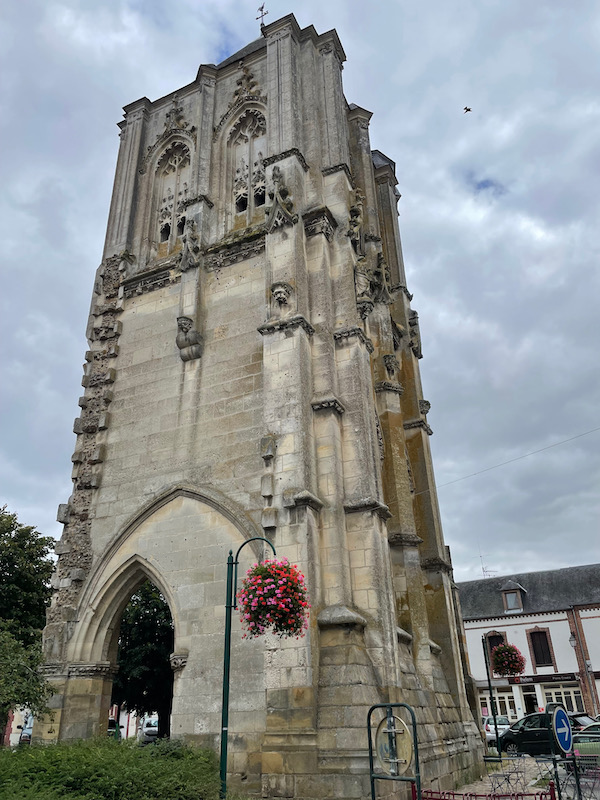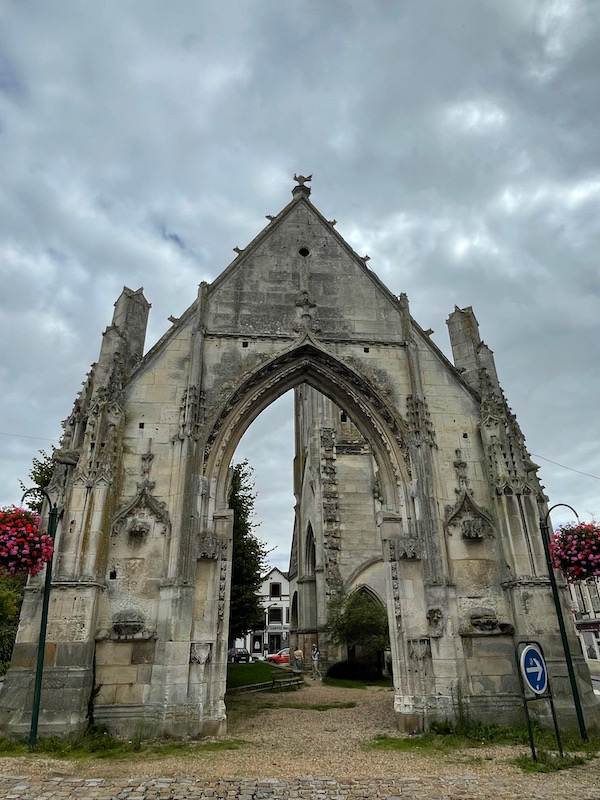Our Blog - Normandy 2023 - Verneuil-sur-Avre, France
I use the name Verneuil-sur-Avre for the town but I guess, technically, it is now Verneuil d'Avre and Iton since it merged with another town in 2017. The town was founded in 1129 by Henri I Beauclerc, the 3rd son of William the Conquerer. The medieval city was protected by ramparts lined with water ditches that still surround the historic center today. The tourist office had probably the best brochure of any town in the area, with 2 walking tours (historic center that we did, and also a 2nd one that goes around the ditches that surround the old walls).
The Église Saint Madeleine, dedicated to Saint Mary Magdalene, was begun in the 12th century, at the same time as the foundation of the city itself. You can see how the church looks quite small and plain compared to the Flamboyant Gothic tower that was added at the end of the 15th century. The tower is adorned with more than thirty statues arranged on two levels, representing characters from the Old Testament to the first and the New Testament to the second.
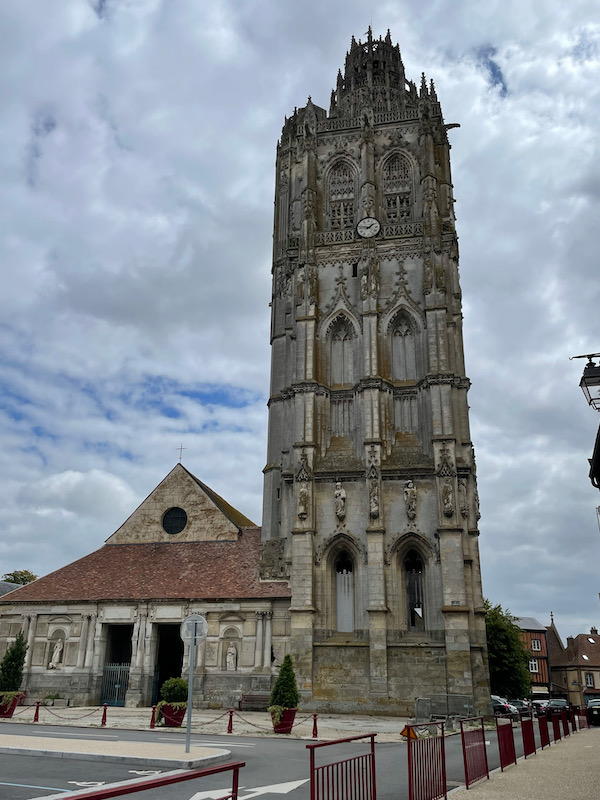
Inside, it is semi-traditional, with a nave and side aisles. The walls are painted nicely and the ceiling (typical of these Northern churches) is wooden and resembles an inverted boat hull.
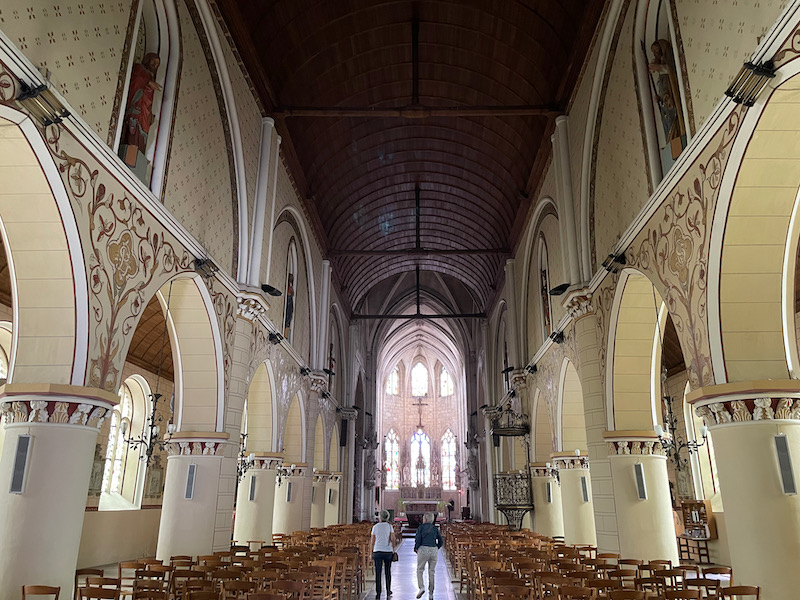
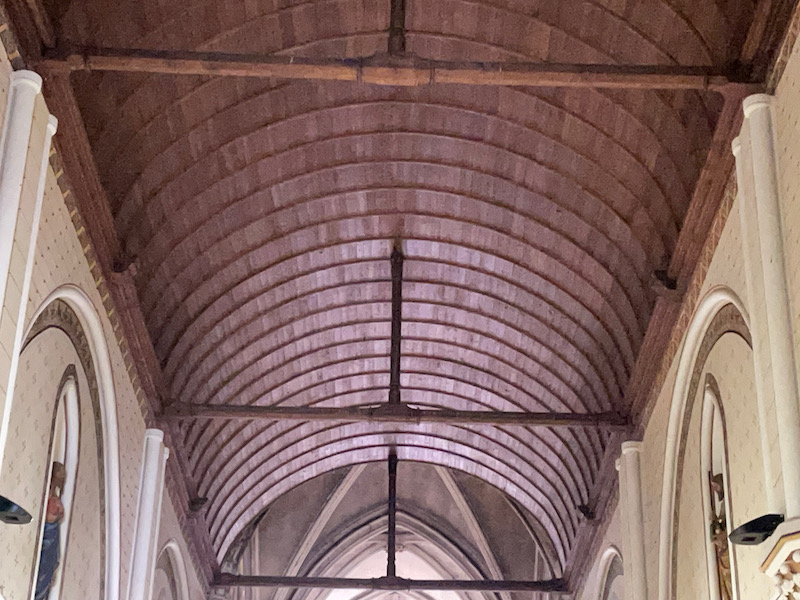
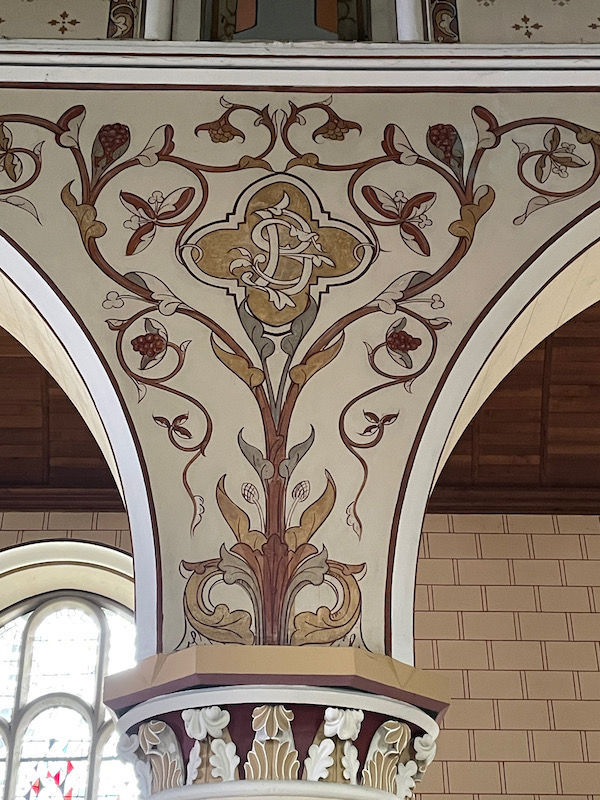
Here is an interesting statue showing Saint Michael the Archangel killing the devil.
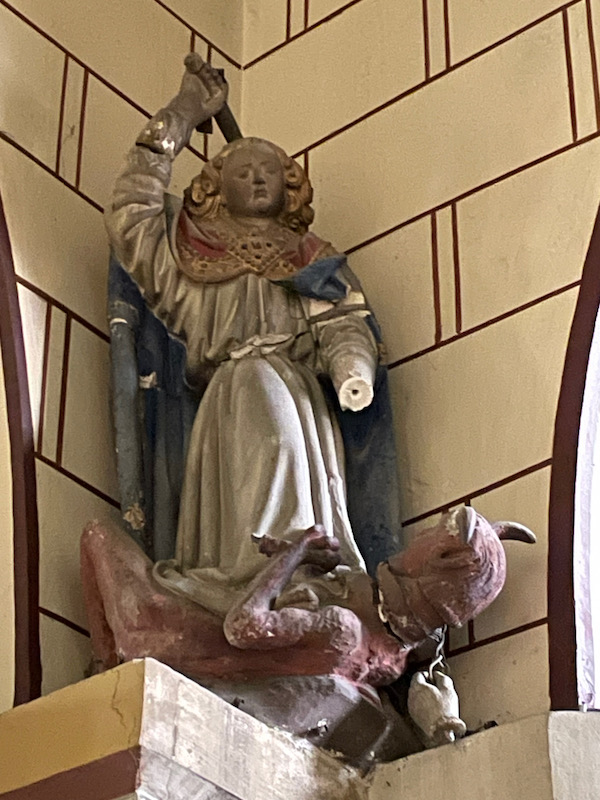
They had a polychrome statue-group in the south transept, dating to the 16th century and it depicts the entombment of Jesus. The colors look bright here due to a restoration that took place in 1980. Across the church in the north transept is another statue group showing the nativity scene and the adoration of the Magi (this one is from the 19th century).
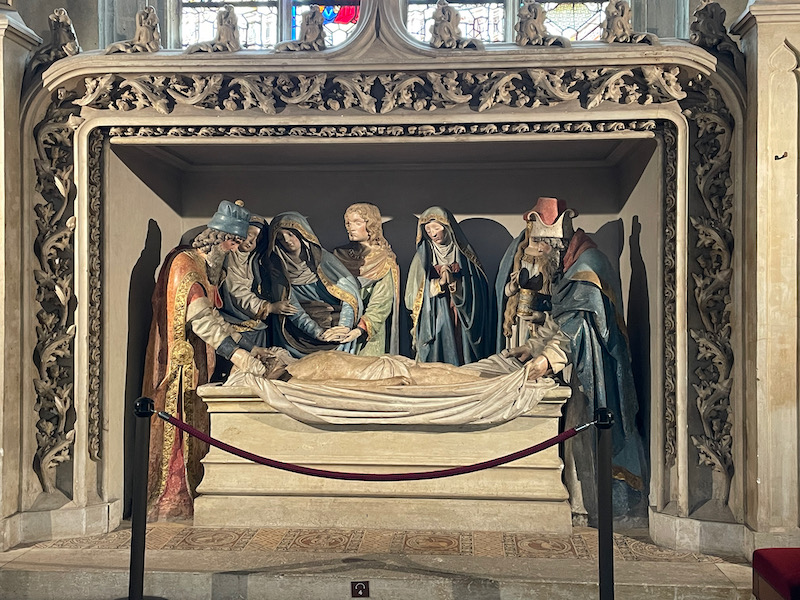
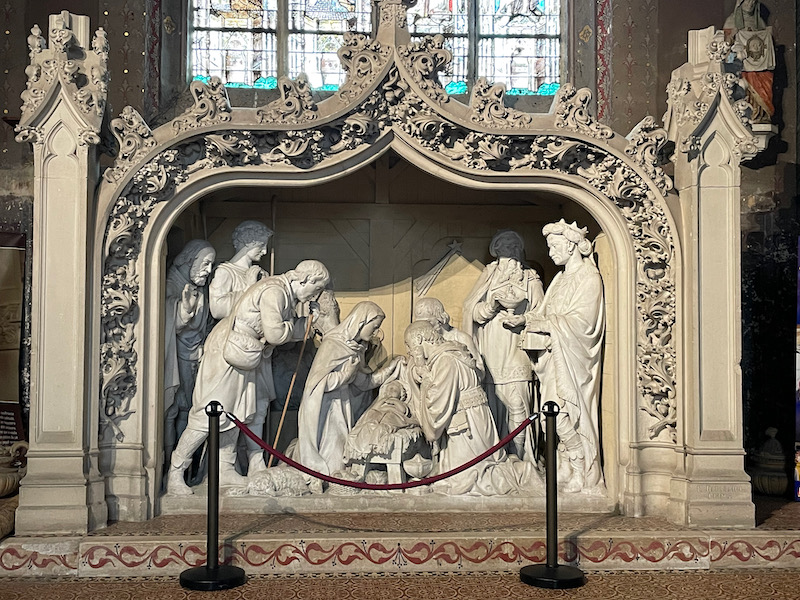
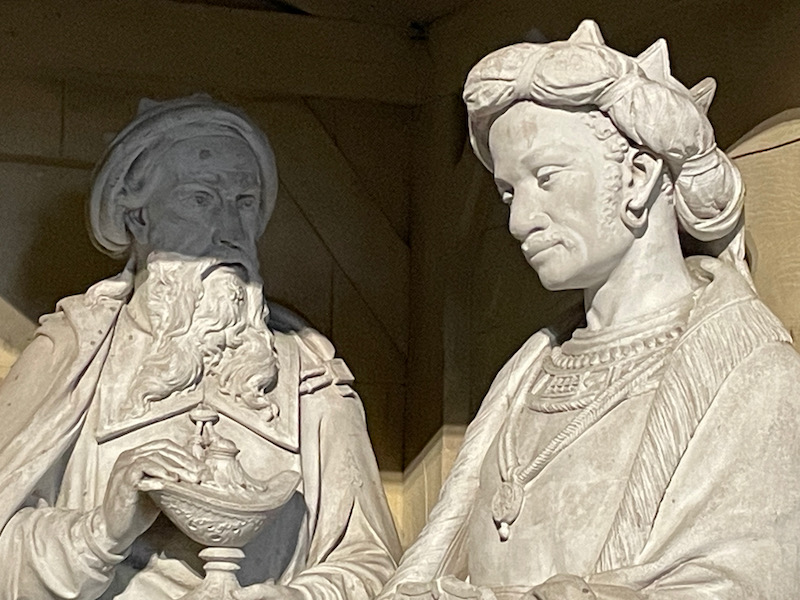
The stained-glass dates from 15th and 16th centuries.
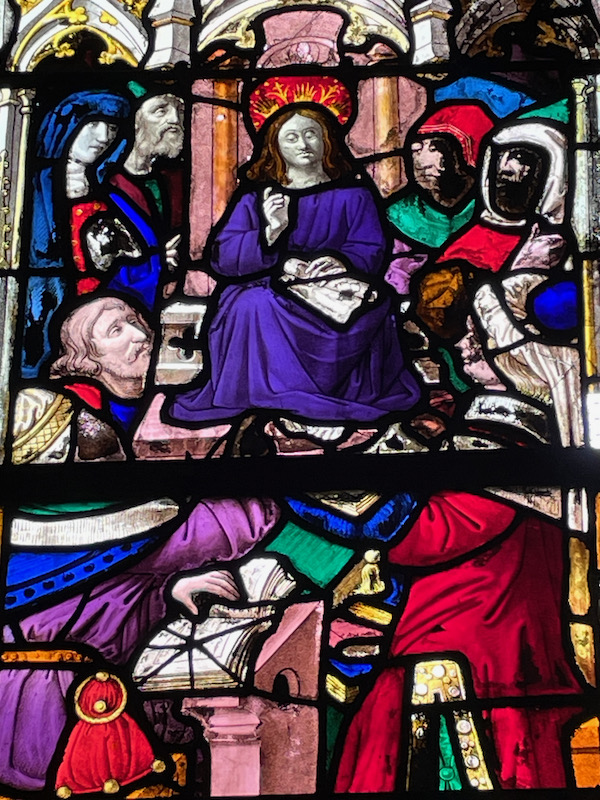
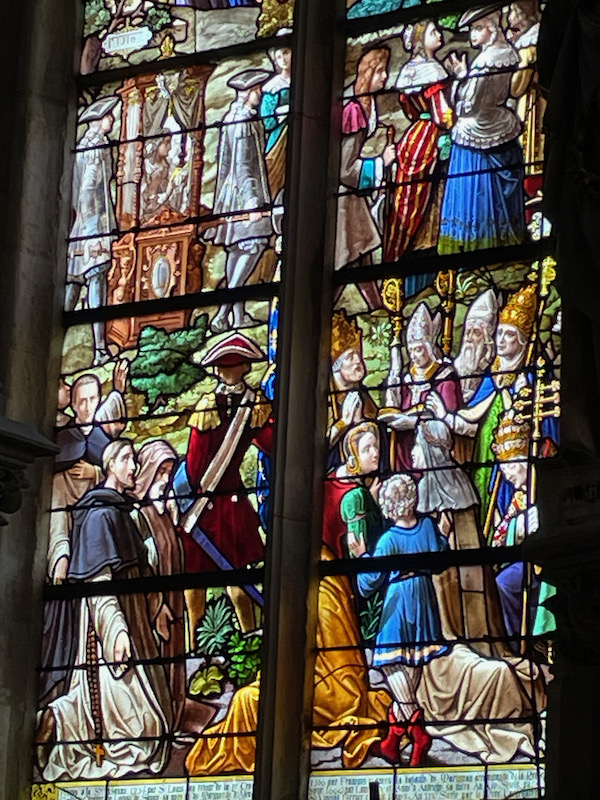
Various statues around the church, most dating from the 15th and 16th centuries as well.
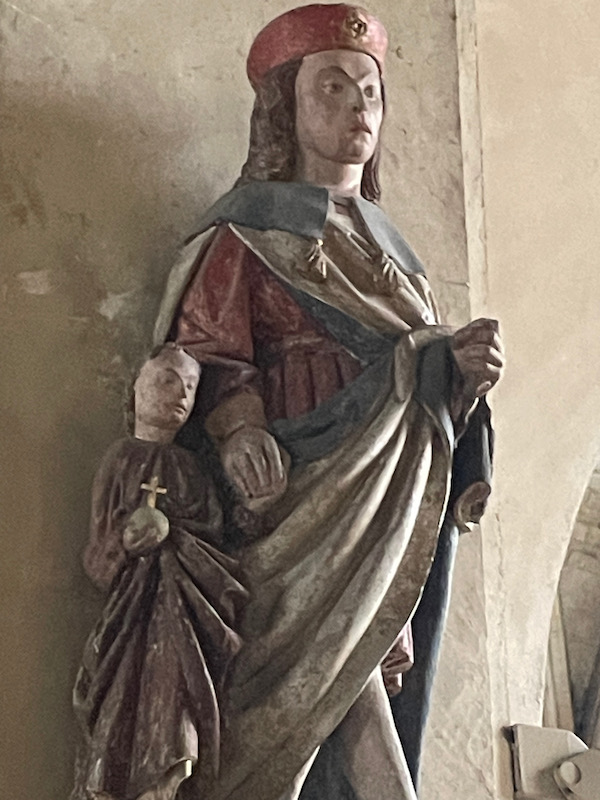
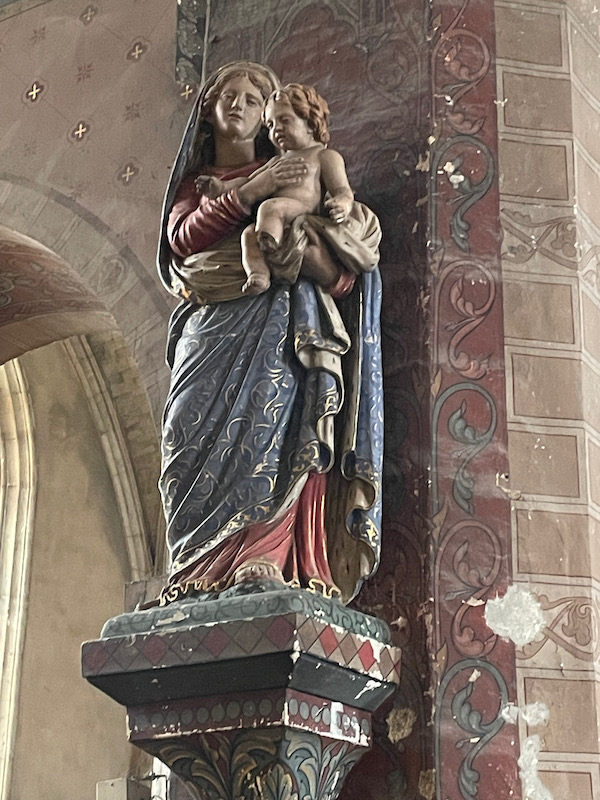
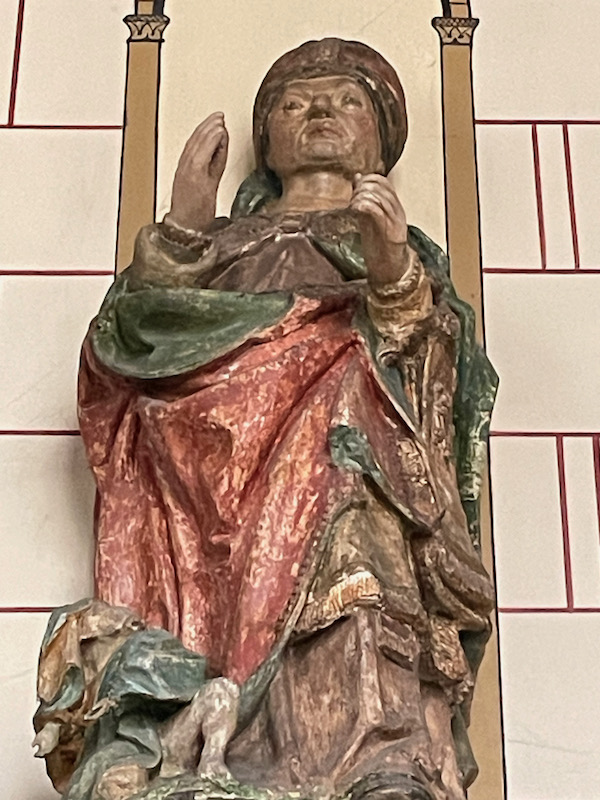
From the start of the 16th century, this one shows Saint George slaying the dragon.
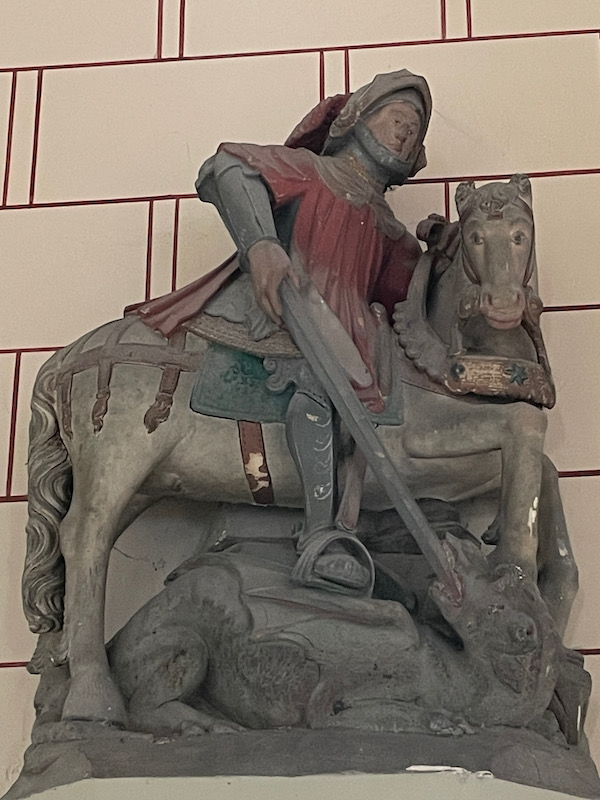
One of the cuter "no puppy" signs that we saw.

This house is called the Maison a Tourelle, or the House with the Turret. It dates from the 2nd half of the 15th century and it has a lot of nice decorations on the turret itself. The main part of the building is in a style called "damier", which means "checkerboard". Using this is very common in Normandy and especially in this department (Eure). It is also popular with Louis Vuitton bags :-) Here, the checkerboards are shown with white, red, and black.
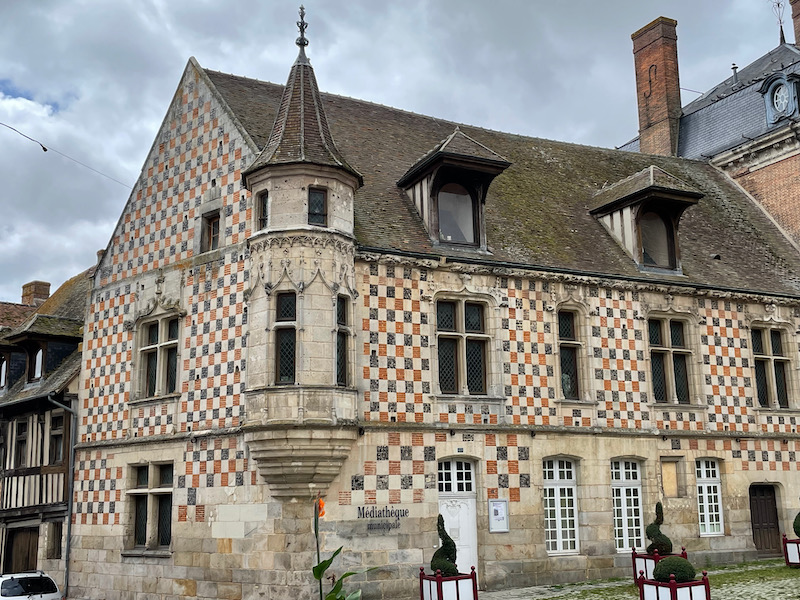
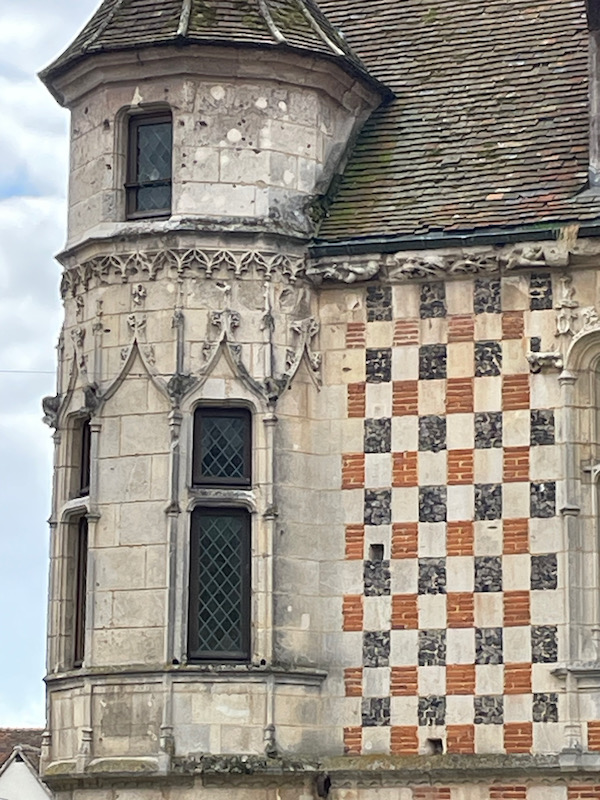
The rue de la Madeleine was one of the main roads, linking Paris to Brittany. Along this road, there are many 15th and 16th century houses, some half-timbered and others, elegant mansions like this one, the Hotel de Bournonville from 1760.
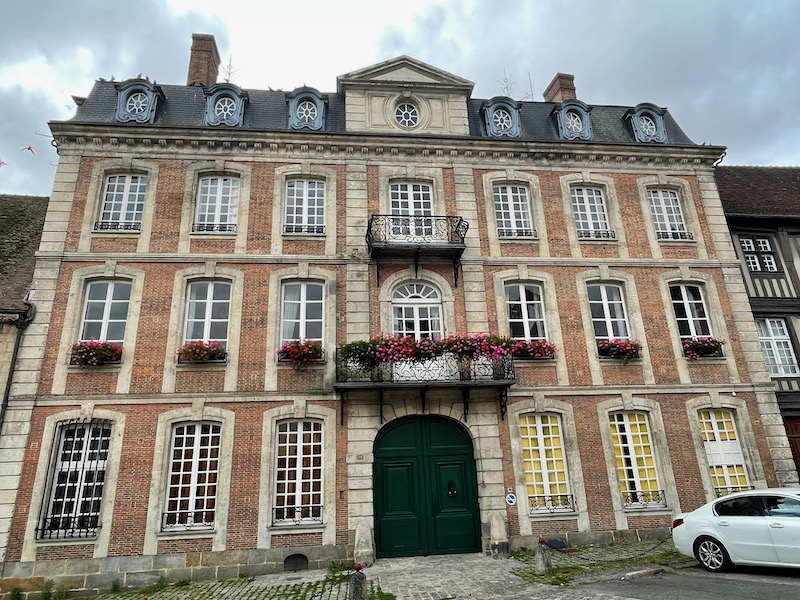
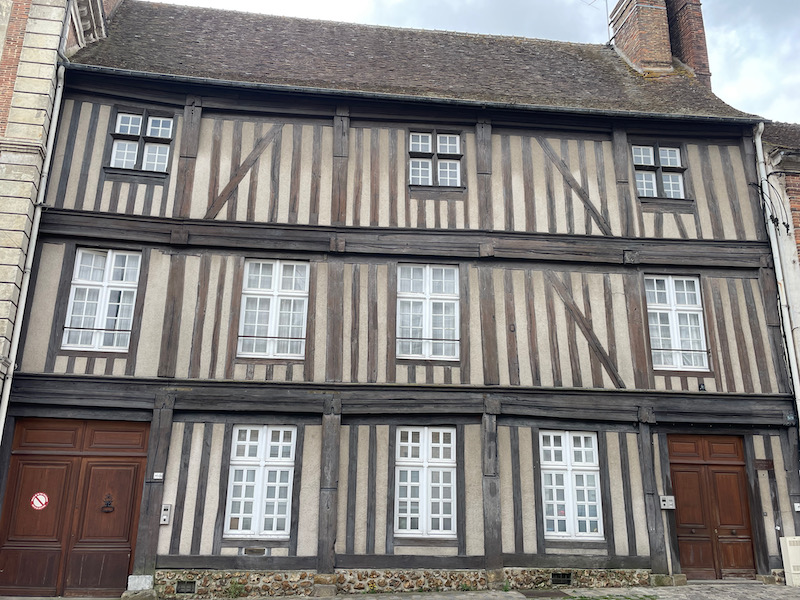
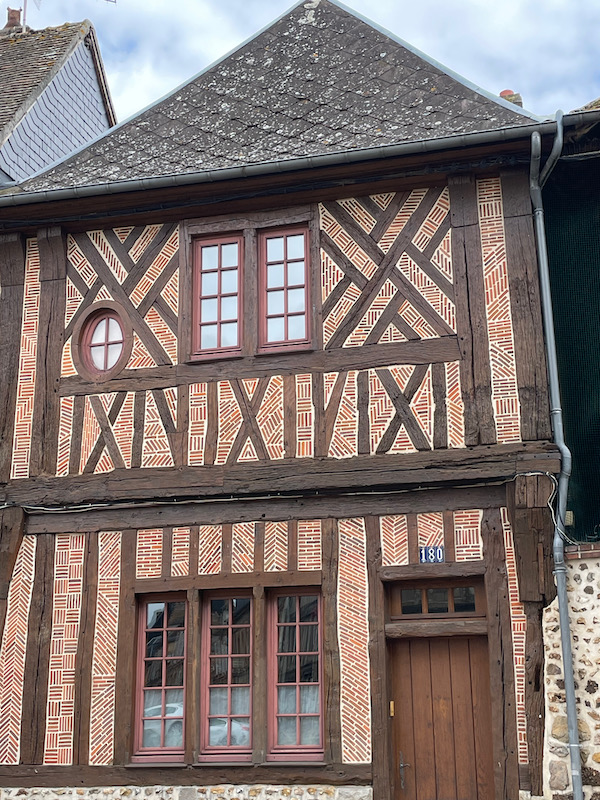
This little house had some very interesting decorations on the front ... a set of 6 dogs, some animal I can't tell what is, then a bird, and lastly a dog head. The last 3 are wood carvings with the dogs seem to be maybe ceramic or terra cotta.
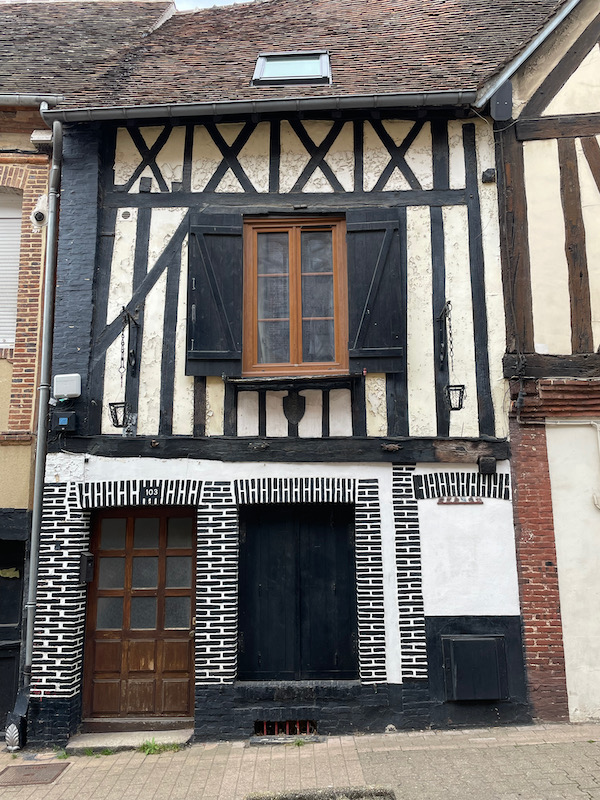
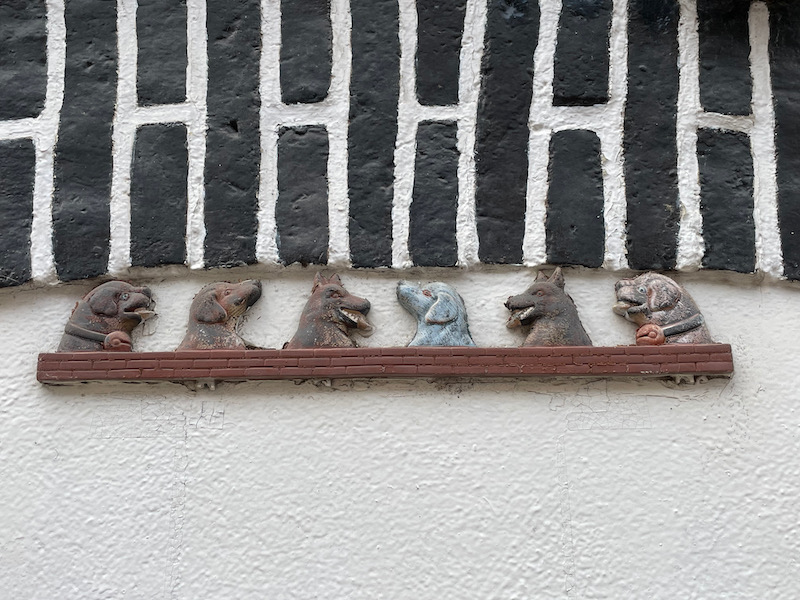
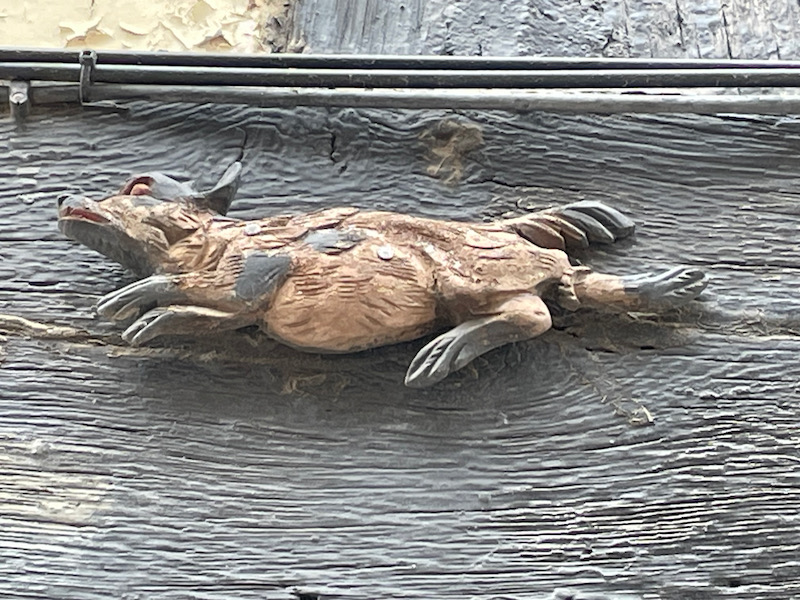
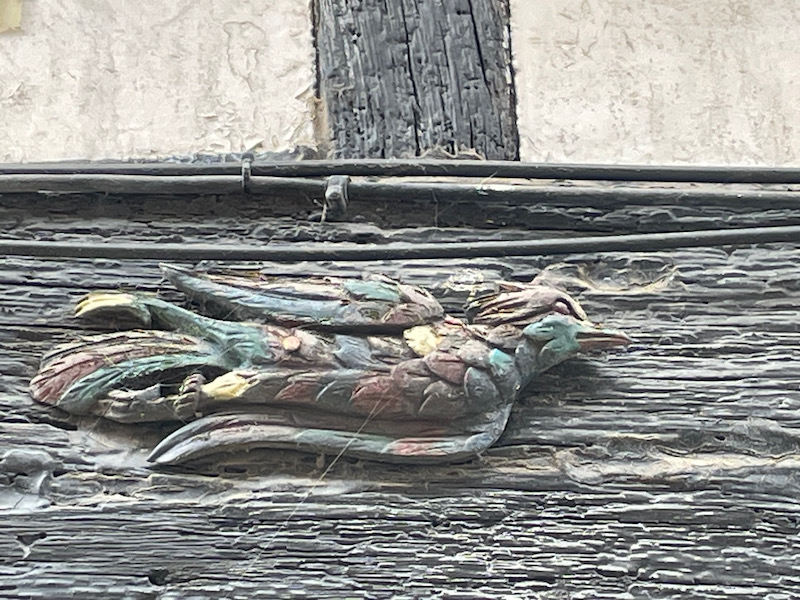
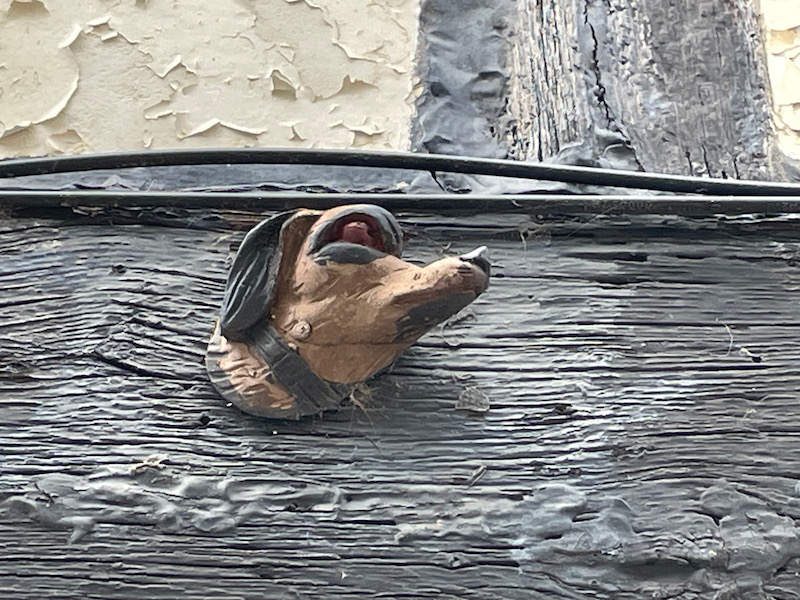
This 15th century half-timbered house has an interesting emblem on it .. a wooden peel (the tool that was used by the bakers to put the dough into the oven and then pull out the bread once baked). This was used to indicate in the Middle Ages that this was a bakery.
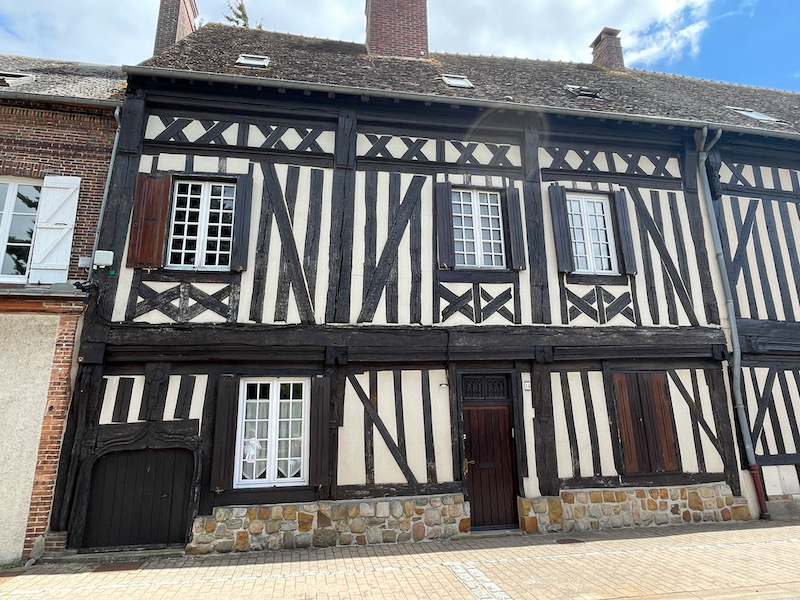
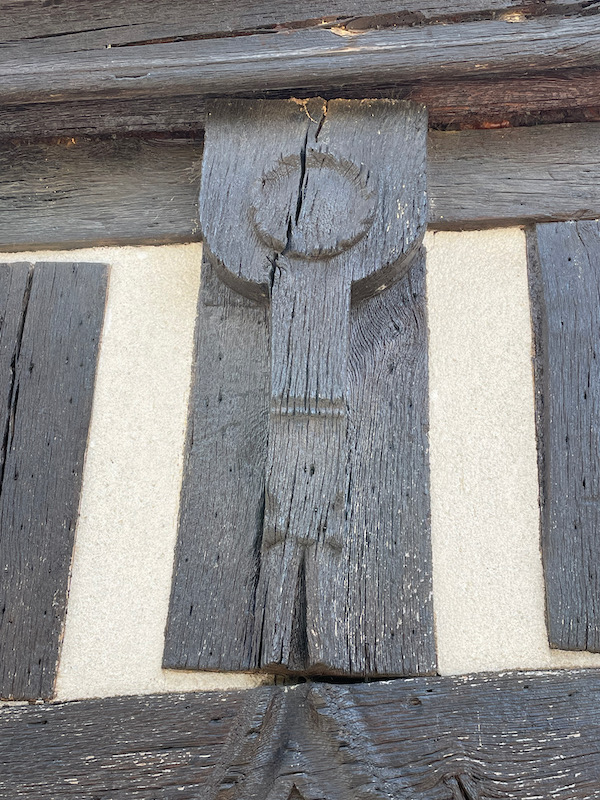
La Tour Grise is a former keep built by Philippe Auguste in 1204 after the conquest of the Duchy of Normandy. Its name comes from a brown stone used for its construction, called "grison". This is the only thing that remains of a fortress that was built here around 1120. You can see around it the remains of the fortification walls.
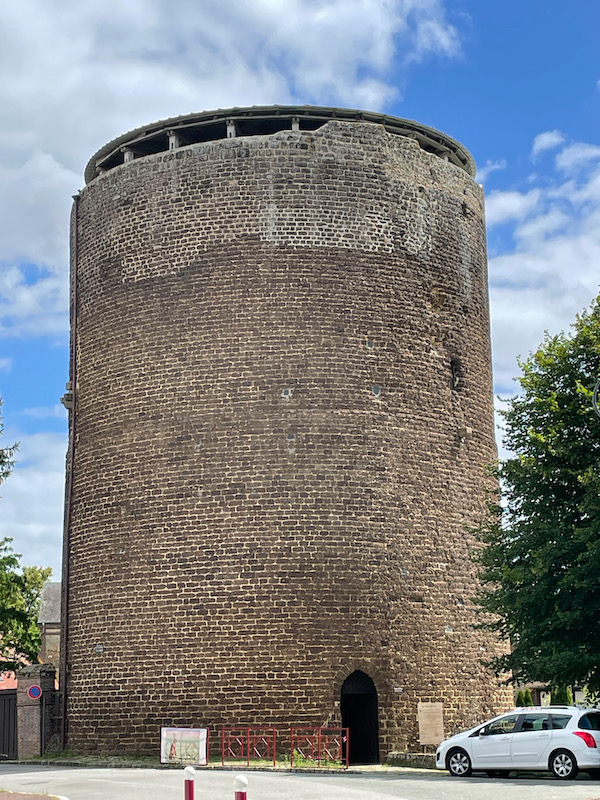
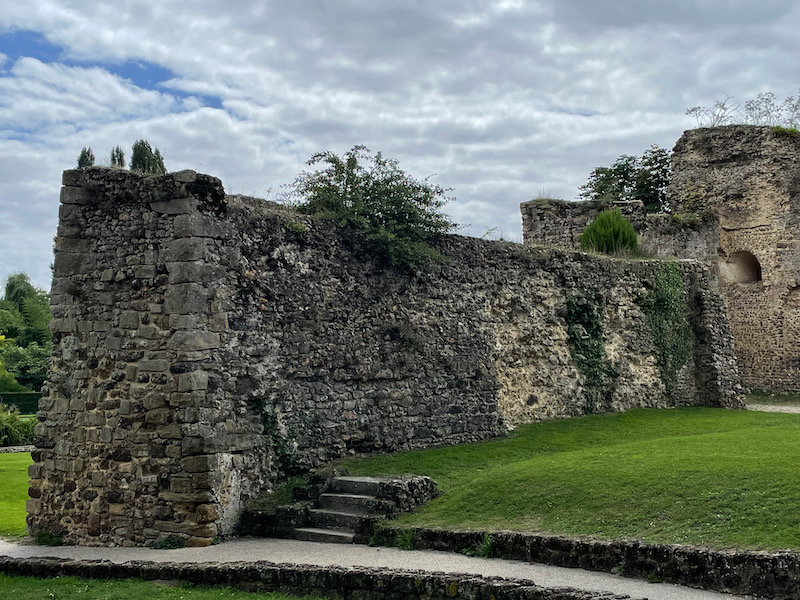
I have no information on this house but, based on all of the very intricate brick-work, I have to believe it was the home of a stone mason!
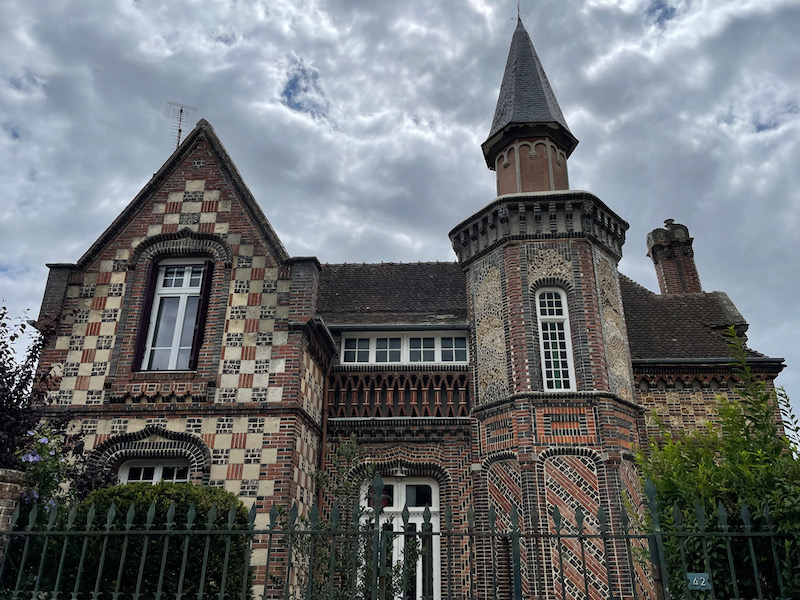
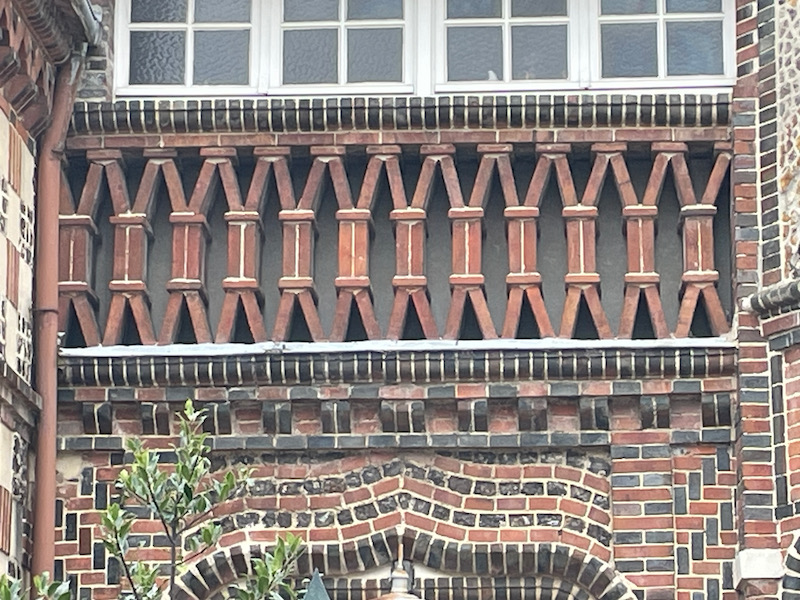
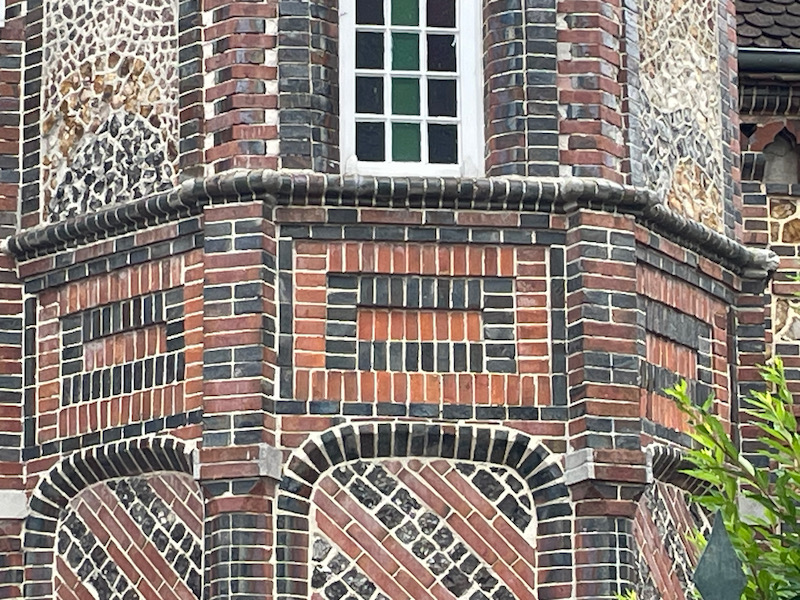
Another house with a little turret on the side, this one finely sculpted.
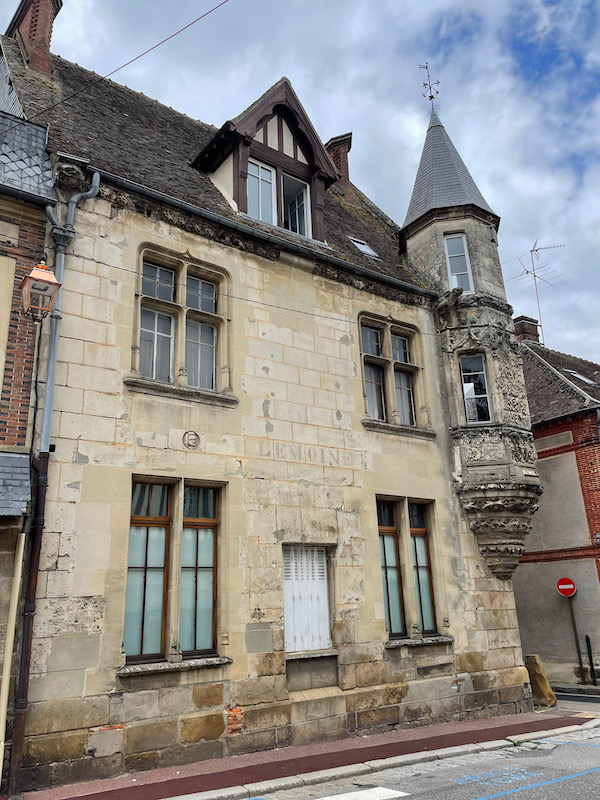
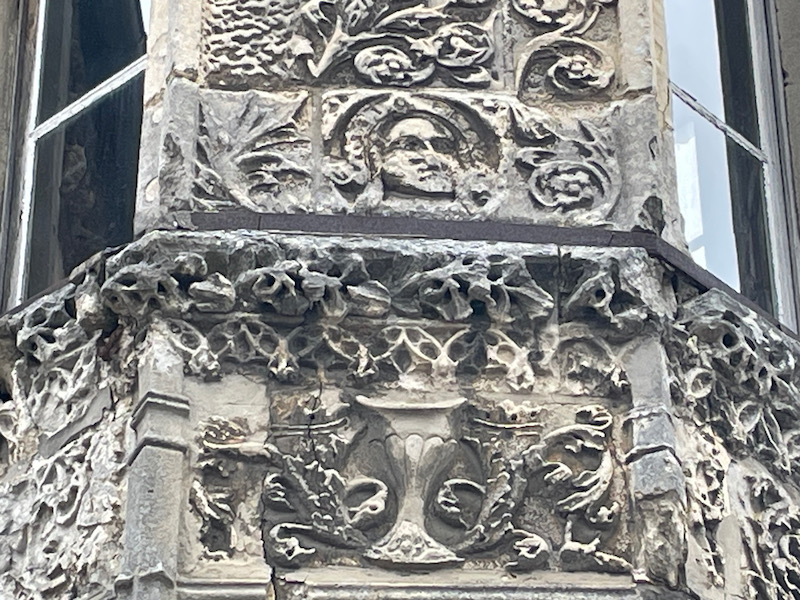
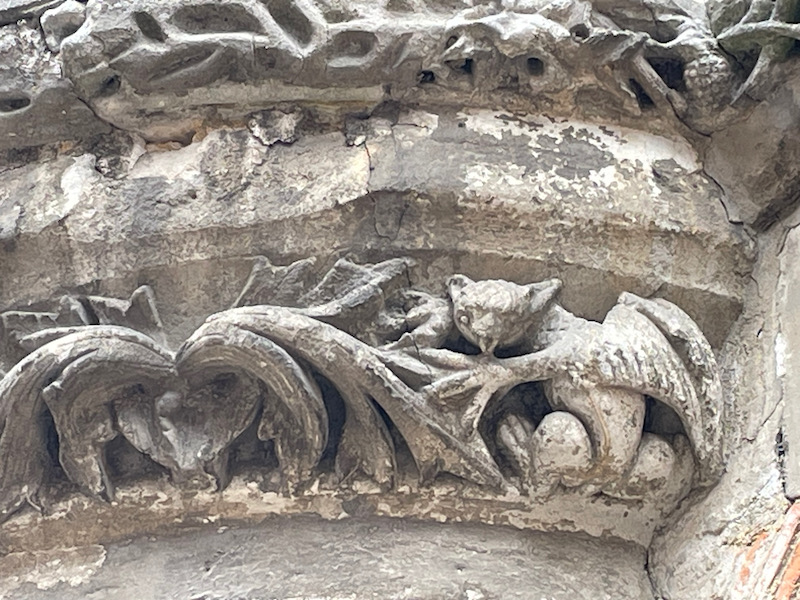
This half-timbered house from the 16th century has a very ornate doorway with carved wooden statues.
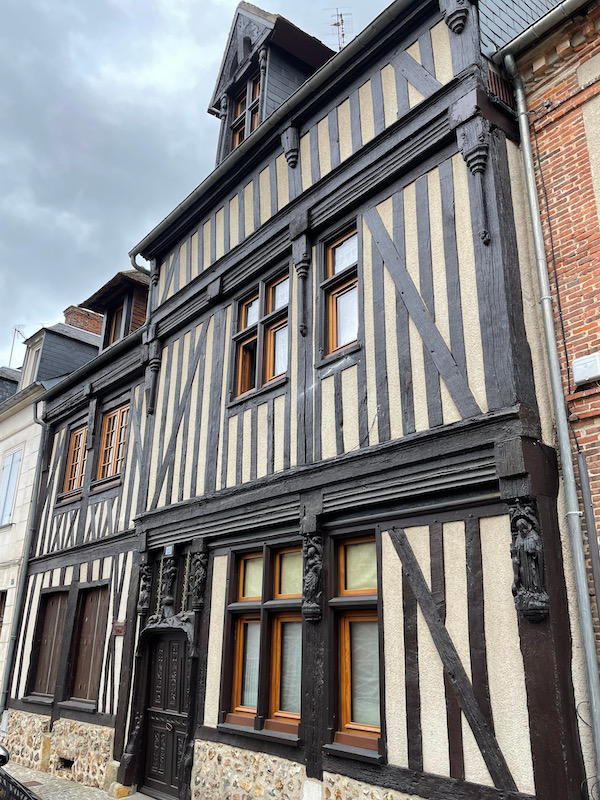
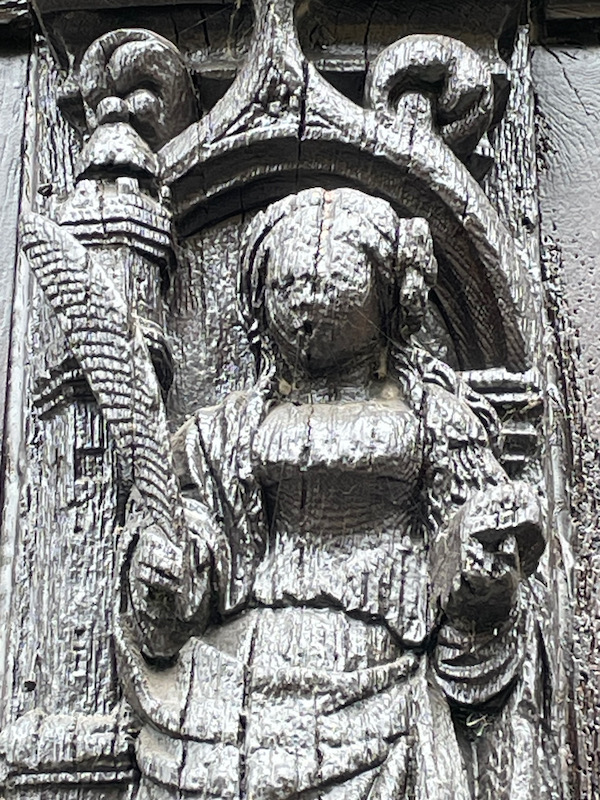
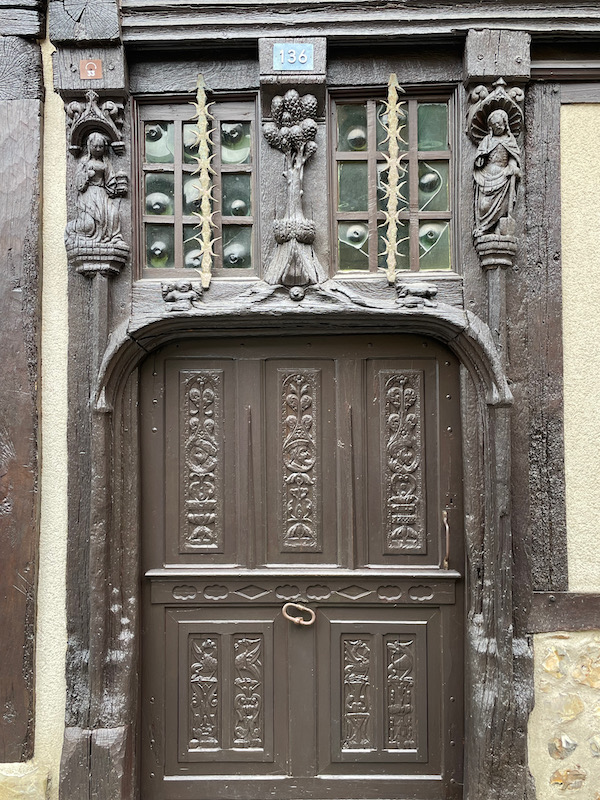
Final stop on our tour today, the remains of the Eglise Saint-Jean, constructed in the 16th century. Most of the church is gone, with the exception of the Western doorway and the clock tower.
